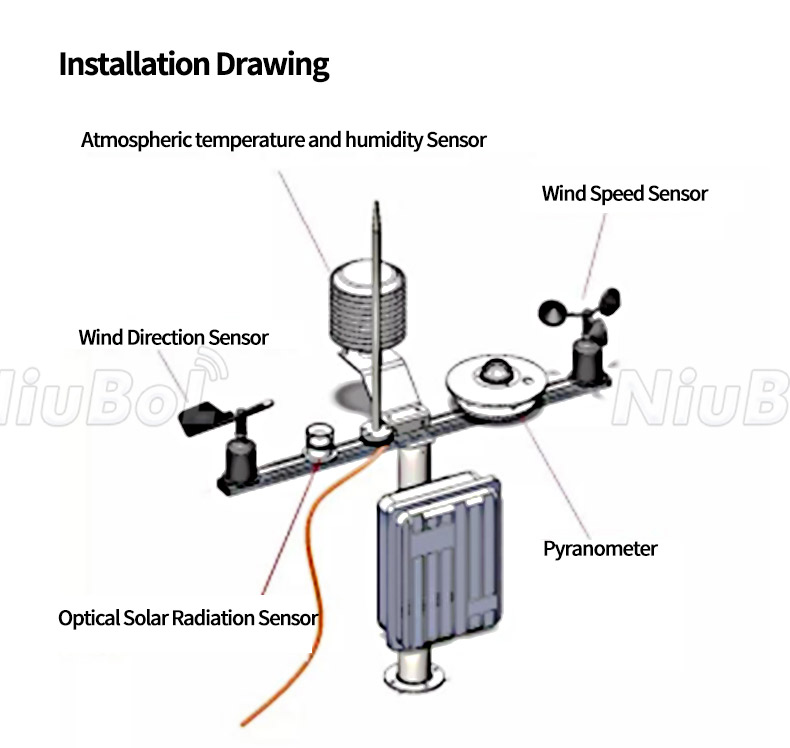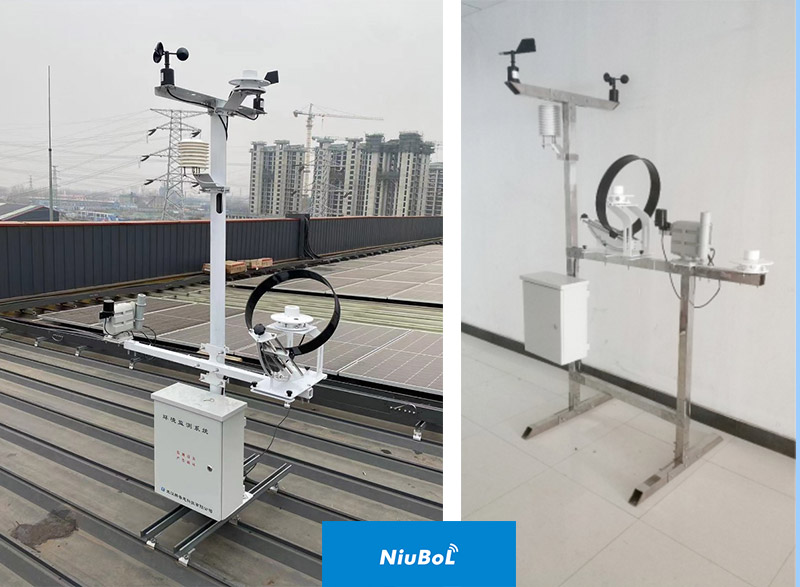

— Blogs —
—Products—
 Consumer hotline +8618073152920
Consumer hotline +8618073152920 WhatsApp:+8615367865107
Address:Room 102, District D, Houhu Industrial Park, Yuelu District, Changsha City, Hunan Province, China
Product knowledge
Time:2024-03-03 15:05:18 Popularity:4663
Solar radiation measurement instruments are devices used to measure the intensity of solar radiation, which includes sunlight as well as other forms of electromagnetic radiation emitted by the Sun.These instruments are crucial for a variety of applications, including solar energy research, climate studies, solar panel efficiency testing, and environmental monitoring.
Solar radiation measurement is crucial for various applications, including meteorology, climatology, solar energy research, and agriculture. Here's an overview of the primary instruments used for solar radiation measurement:
1.Pyranometers: These are the most common instruments used to measure global solar radiation, which is the total amount of direct and diffuse solar radiation received from a hemispherical field of view on a surface perpendicular to the sun's rays.Pyranometers are widely used in meteorological stations, for solar energy studies, and in agricultural research.They typically consist of a thermopile sensor that converts heat from solar radiation into an electrical signal.
2.Pyrheliometers: These instruments measure direct beam solar radiation at normal incidence.Unlike pyranometers, pyrheliometers have a narrow field of view and must be pointed directly at the sun, usually with the aid of a solar tracker.Pyrheliometers are essential for evaluating the efficiency of concentrated solar power systems and in detailed solar resource assessment.
3.Pyranographs: These are essentially recording pyranometers that provide a continuous record of solar radiation over time.They use a chart recorder attached to the pyranometer to plot the intensity of solar radiation throughout the day.This historical data is valuable for analyzing patterns and changes in solar radiation.
4.Sunshine Recorders: A traditional instrument, the sunshine recorder, measures the duration of bright sunshine.It typically uses a spherical glass lens to focus the sun's rays onto a calibrated paper or card, burning a trace that can be measured to determine the number of sunshine hours.While not as precise as modern electronic sensors, sunshine recorders are still used in some meteorological stations.
5.Spectroradiometers: These instruments measure solar radiation across a wide range of wavelengths, providing detailed spectral data about the sun’s radiation.Spectroradiometers are essential in research applications, such as studying atmospheric composition, understanding plant photosynthesis processes, and assessing solar panel spectral response.
6.Albedometers: These are essentially two pyranometers mounted back-to-back, one facing upward to measure incoming solar radiation and the other facing downward to measure reflected radiation.Albedometers are used to calculate the albedo (reflectivity) of the Earth's surface, which is important in climate modeling and environmental studies.

7.Net Radiometers: Net radiometers are designed to measure the net radiation balance between incoming and outgoing radiation at the Earth's surface.They typically consist of four sensors: two pyranometers (for shortwave radiation) and two pyrgeometers (for longwave radiation), facing upward and downward.These instruments are crucial in studies related to surface energy balance and evapotranspiration.
8.Solar sensors and arrays: These can include a variety of sensors that measure different aspects of solar radiation, such as the total solar irradiance, diffuse irradiance, or reflected radiation.
9.Radiation thermometers: These use the temperature response of a sensor to measure the radiant power of the Sun.They can be used to infer the solar irradiance when calibrated properly.
10.Solarimeter: A general term for any instrument used to measure solar radiation, which can include a variety of the instruments mentioned above.
11.Satellite instruments: Satellites equipped with solar radiation sensors provide a global view of solar irradiance and are crucial for long-term climate monitoring and solar energy resource assessment.

Each of these instruments must be carefully calibrated to ensure accurate measurements, and they often require protective enclosures or filters to withstand the environmental conditions they are exposed to, such as temperature, humidity, dust, and rain.
Each of these instruments plays a specific role in the comprehensive study and utilization of solar radiation.The choice of instrument depends on the particular requirements of the application, such as the type of radiation to be measured, the desired accuracy, and the available budget.
NBL-W-HPRS-Solar-Radiation-Sensor-Instruction-Manual-V3.0.pdf
NBL-W-SRS-Solar-radiation-sensor-instruction-manual-V4.0.pdf
Related recommendations
Sensors & Weather Stations Catalog
Agriculture Sensors and Weather Stations Catalog-NiuBoL.pdf
Weather Stations Catalog-NiuBoL.pdf
Related products
 Combined air temperature and relative humidity sensor
Combined air temperature and relative humidity sensor Soil Moisture Temperature sensor for irrigation
Soil Moisture Temperature sensor for irrigation Soil pH sensor RS485 soil Testing instrument soil ph meter for agriculture
Soil pH sensor RS485 soil Testing instrument soil ph meter for agriculture Wind Speed sensor Output Modbus/RS485/Analog/0-5V/4-20mA
Wind Speed sensor Output Modbus/RS485/Analog/0-5V/4-20mA Tipping bucket rain gauge for weather monitoring auto rainfall sensor RS485/Outdoor/stainless steel
Tipping bucket rain gauge for weather monitoring auto rainfall sensor RS485/Outdoor/stainless steel Pyranometer Solar Radiation Sensor 4-20mA/RS485
Pyranometer Solar Radiation Sensor 4-20mA/RS485
Screenshot, WhatsApp to identify the QR code
WhatsApp number:+8615367865107
(Click on WhatsApp to copy and add friends)
